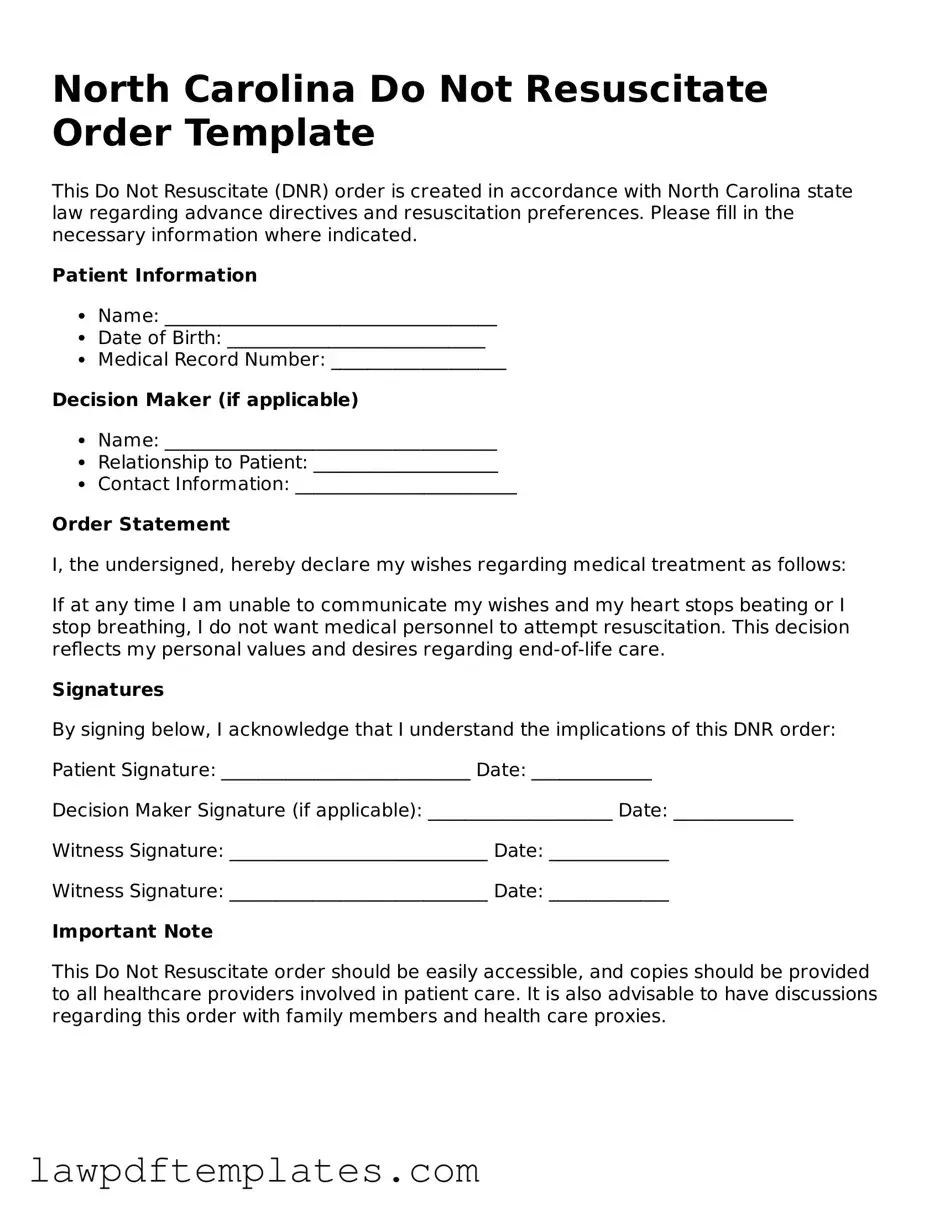North Carolina Do Not Resuscitate Order Template
This Do Not Resuscitate (DNR) order is created in accordance with North Carolina state law regarding advance directives and resuscitation preferences. Please fill in the necessary information where indicated.
Patient Information
- Name: ____________________________________
- Date of Birth: ____________________________
- Medical Record Number: ___________________
Decision Maker (if applicable)
- Name: ____________________________________
- Relationship to Patient: ____________________
- Contact Information: ________________________
Order Statement
I, the undersigned, hereby declare my wishes regarding medical treatment as follows:
If at any time I am unable to communicate my wishes and my heart stops beating or I stop breathing, I do not want medical personnel to attempt resuscitation. This decision reflects my personal values and desires regarding end-of-life care.
Signatures
By signing below, I acknowledge that I understand the implications of this DNR order:
Patient Signature: ___________________________ Date: _____________
Decision Maker Signature (if applicable): ____________________ Date: _____________
Witness Signature: ____________________________ Date: _____________
Witness Signature: ____________________________ Date: _____________
Important Note
This Do Not Resuscitate order should be easily accessible, and copies should be provided to all healthcare providers involved in patient care. It is also advisable to have discussions regarding this order with family members and health care proxies.
